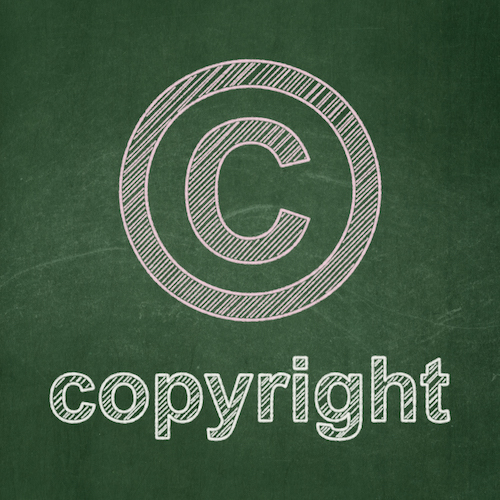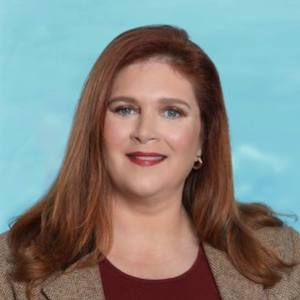“[A] teacher creates a transformative work, which falls into the protective bubble of Fair Use, when they craft a message, enhance their students’ educational experience, or educate their students in creating expressive content; as Fair Use is a lawful use of copyright [as articulated in Lenz v. Universal], such usage is non-infringing and should be permitted under educational policies at all times, but particularly while teaching in the shadow of COVID-19.”
 COVID-19 expanded online classes for students of all levels. Since education in the United States has traditionally been face-to-face in classrooms, policies regarding classroom usage of copyright-protected works have been re-examined in these exigent circumstances. Educators and policy-makers’ perspectives on Fair Use were not written for situations where face-to-face education is over videoconferencing technology and in virtual classrooms; educator obligations regarding use and distribution of books, music, videos and even worksheets, as well as policies managing how teachers teach, and how students learn and document mastery of subjects, have been swiftly re-assessed.
COVID-19 expanded online classes for students of all levels. Since education in the United States has traditionally been face-to-face in classrooms, policies regarding classroom usage of copyright-protected works have been re-examined in these exigent circumstances. Educators and policy-makers’ perspectives on Fair Use were not written for situations where face-to-face education is over videoconferencing technology and in virtual classrooms; educator obligations regarding use and distribution of books, music, videos and even worksheets, as well as policies managing how teachers teach, and how students learn and document mastery of subjects, have been swiftly re-assessed.
While educators revised policies, two decisions were published; each has the potential to broaden how copyright-protected works can be used in virtual classrooms. On March 24, 2020, the Ninth Circuit said in Tresona Multimedia, LLC v Burbank High School Vocal Music Association that “the defense of Fair Use, if applicable, should cover ‘teaching’ whether in a private or public setting.” The ruling did not distinguish between face-to-face education and distance learning, stating simply that “the Fair Use defense renders a use non-infringing.
The same week, the Supreme Court ruled in Allen et al. v. Cooper, Governor of North Carolina, et al., 589 U.S. ___ (2020) that a state could not be sued for copyright infringement by a company that held copyrights in photographs. Justice Kagan wrote for the unanimous court that “Article 1’s Intellectual Protection Clause could not provide the basis for an abrogation of sovereign immunity.” Congress could create that basis, but at this moment it does not exist. Accordingly, state-licensed schools might not be liable for copyright infringement, as the law currently stands. In a different time, Congress might take action to change this situation relatively briskly, but given the current complexities in the world, there is no expectation that such a law will exist before the end of this school year.
Fair Use Favors Flexibility
Even before both rulings were released, the concept of Fair Use gave broad latitude for many kinds of classroom uses. A Fair Use analysis needs to look to four factors, specifically (a) the purpose and character of the use; (b) the nature of the copyrighted work; (c) the amount and substantiality of the portion taken, and (d) the effect of the use upon the potential market. Copyright specialists affiliated with libraries around the U.S. looked to Fair Use in stating that “making materials available and accessible to students in this time of crisis will almost always be Fair Use. If we are being thoughtful in analysis and limiting activities to the specific needs … during this time of crisis, copyright law supports our uses.” Their position is that Fair Use “accommodates the flexibility required by our shared public health crisis, enabling society to function and progress while protecting human life and safety.”
The Tresona ruling looked to “the limited and transformative nature of the use [of the song by the choir] and the work’s nonprofit educational purposes in enhancing the educational experience of … students.” A work is transformative Fair Use when “new expressive content or message is apparent,” even if “the allegedly infringing work makes few physical changes to the original or fails to comment on the original,” said the court, looking to Seltzer v. Green Day, Inc., 725 F.3d 1170, 1177 (9th Cir. 2013). Accordingly, a teacher creates a transformative work, which falls into the protective bubble of Fair Use, when they craft a message, enhance their students’ educational experience, or educate their students in creating expressive content; as Fair Use is a lawful use of copyright, such usage is non-infringing and should be permitted under educational policies at all times, but particularly while teaching in the shadow of COVID-19.
Copyright is Not Infringed in “Places Devoted to Instruction”
Even without reliance on Fair Use exceptions, Section 17 U.S.C. § 110(1) of the Copyright Act explicitly says that neither teachers nor students infringe on copyright when using a work “in the course of the face-to-face teaching activities of a non-profit educational institution, in a classroom or similar place devoted to instruction.” It is reasonable to conclude that internet-based teaching activities of public schools and non-profit educational institutions qualify as a “similar place devoted to instruction.” To the extent they might not, a Fair Use analysis of the “purpose and character” of said follow-on use should enable teachers to modify their in-classroom teaching activities for use online without worrying that they are infringing on someone’s copyright.
Well-known authors who are also licensors, like J.K. Rowling, Brad Meltzer and children’s book creator Mo Willems of Don’t Let the Pigeon Drive the Bus fame, have recently expanded their licenses to educators. Willems is working with the Kennedy Center, where he is the author in residence, to teach drawing using his books. Meltzer has granted a broad license for teachers to use his I Ambooks in their online classrooms and J.K. Rowling took to Twitter to “help teachers reach kids at home by relaxing the usual license required to post videos of themselves reading Harry Potter books”. However, in the United States, between the Copyright Act exceptions and the nature of Fair Use, educators probably don’t need J.K. Rowling’s permission to read portions of the Harry Potterbooks with their students, and discuss passages in online classes, any more than they need permission to do so in a traditional brick-and-mortar classroom.
Is Videoconferencing a Closed Educational Platform?
Given current Fair Use common law, teachers should not be required to ask permission from an author to post a video of themselves reading a copyrighted book to their students, especially if that video is sent via email to the students, or shared by the teacher only on a school’s secure networks or closed educational platforms. One ongoing question is whether third-party videoconferencing systems used as virtual classrooms are the equivalent of a school’s secure network or closed educational platform; if they are seen as analogous, educators using those platforms can rely on Section 110(1) exceptions. Even videos uploaded to YouTube could fall into that analogy, especially if the videos are not publicly listed on the service, and only those with the URL can access them.
However, Archive.org’s decision to place thousands of eBooks online as an “emergency library” may not be Fair Use, even under these circumstances; the Archive.org library includes entire works, and does not add transformative elements, two pertinent Fair Use factors lean against its applicability to unrestricted access to its Open Library. As access to eBooks and audiobooks is already provided by US libraries, who are currently granting library cards to those who request them via local library websites, the same exigencies that would allow teachers to rely on Fair Use for classwork do not exist for PDFs of recently-published novels.
As schools evaluate policies, they can review whether specific plans are permitted under the Copyright Act or are non-infringing because of Fair Use carve-outs; presuming follow-on uses are infringing forces teachers to forego educational opportunities for their students, and as they collaborate. (For those educational supervisors and managers who still wish to use only licensed materials, T.H.E. Journal is updating their list of resources daily). Copyright owners should also take this time to examine their policies and license language; failure to do so risks public relations fallout. Copyright monopolism does not exist in the United States, but copyright protection does – the balance between the two is a necessary focus for all copyright-holders during the time of COVID-19-impacted education.
Image courtesy of DepositPhotos
Image ID: 43145463
Copyright: maxkabakov

![[IPWatchdog Logo]](https://ipwatchdog.com/wp-content/themes/IPWatchdog%20-%202023/assets/images/temp/logo-small@2x.png)

![[Advertisement]](https://ipwatchdog.com/wp-content/uploads/2024/04/UnitedLex-May-2-2024-sidebar-700x500-1.jpg)
![[Advertisement]](https://ipwatchdog.com/wp-content/uploads/2024/04/Artificial-Intelligence-2024-REPLAY-sidebar-700x500-corrected.jpg)
![[Advertisement]](https://ipwatchdog.com/wp-content/uploads/2024/04/Patent-Litigation-Masters-2024-sidebar-700x500-1.jpg)

![[Advertisement]](https://ipwatchdog.com/wp-content/uploads/2021/12/WEBINAR-336-x-280-px.png)
![[Advertisement]](https://ipwatchdog.com/wp-content/uploads/2021/12/2021-Patent-Practice-on-Demand-recorded-Feb-2021-336-x-280.jpg)
![[Advertisement]](https://ipwatchdog.com/wp-content/uploads/2021/12/Ad-4-The-Invent-Patent-System™.png)






Join the Discussion
2 comments so far.
Mandee Heller Adler
April 2, 2020 04:21 pmThank you so much for this informative and well written article. So much is changing with education, and I had not even considered the legal implications of online learning!
Anon
April 2, 2020 08:01 amI paused at this point:
“as Fair Use is a lawful use of copyright”
This is not correct — on many levels.
I also point out that the attempt to use “borrowed authority” in the statements and linked ‘experts’ is nothing more than a logical fallacy. The underlying law and factual nature of a Fair Use analysis has not changed one iota due to the shifting social conditions.
It** HAS changed tremendously due to the one particular case cited (the USSC case). What the extent of that change is, remains to be fleshed out, but as noted elsewhere, that case is NOT about Fair Use, but instead is a Sovereign exception (Fair Use doctrine is not even reached).
**in this sense, “it” is not even about Fair Use, but rather ANY State actor use —- whether or not that falls to Fair Use.
I am not aware of the other case cited (Ninth Circuit). I withhold comment until I understand more about that case.